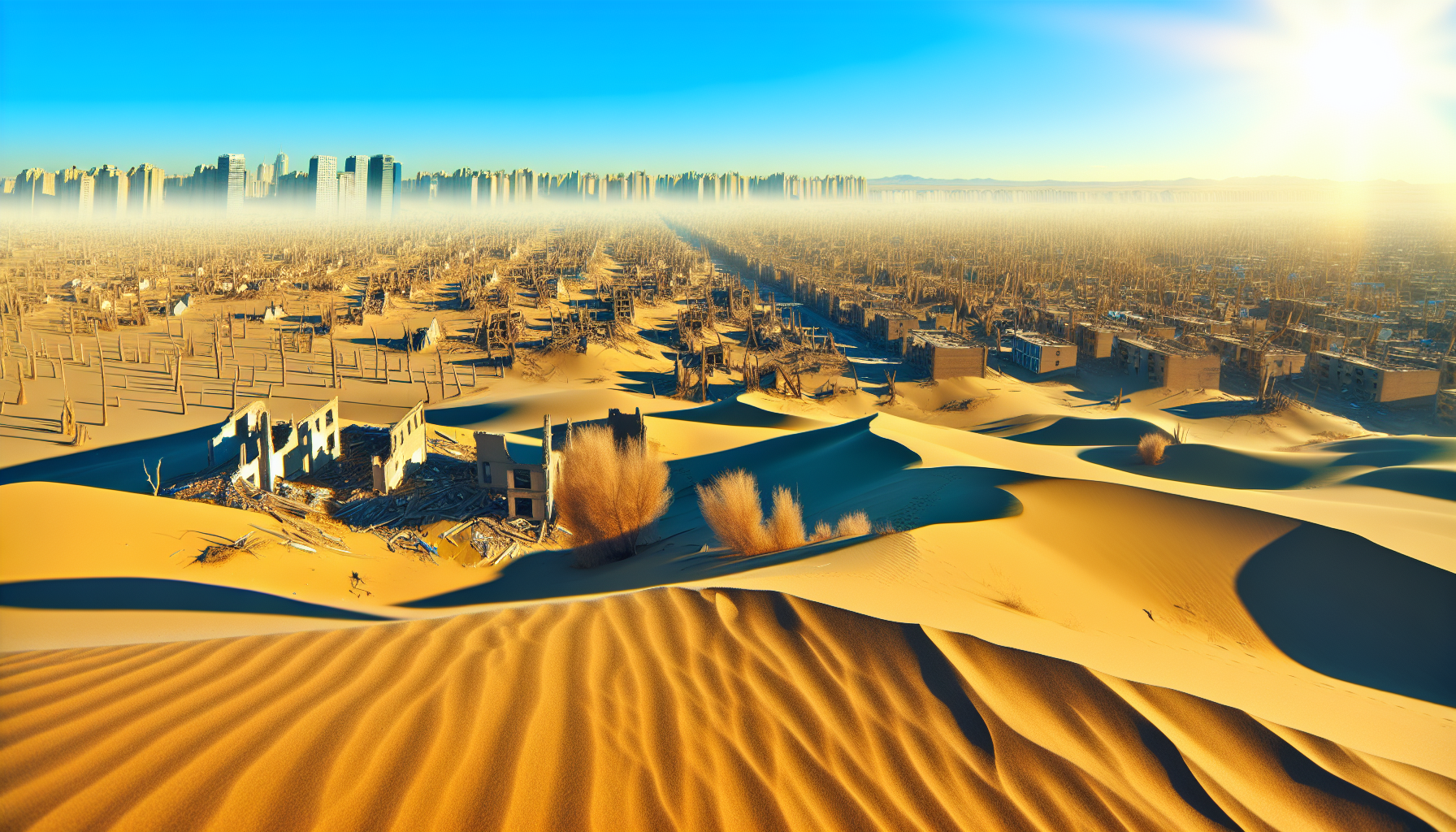Imagine, if you will, stepping out your front door where once a city teemed with life, and now all that greets you is the ruthless stretching of desert sands. As urban expansion once clamored endlessly outward, Mother Nature has countered with a creeping boundary of her own: the relentless advance of desertification.
The term ‘urban sprawl’ itself now feels like an artifact of a bygone era, one that we retrospectively paint in sepia as chapters of old textbooks. An era where our concerns fixated on unchecked development and unstoppable construction. Today’s lexicon, however, demands a direr discourse: desertification.
Recent estimates suggest that over 35% of the Earth’s land is threatened by this scourge of barrenness. Necessary urban centers are struggling to adapt as they find themselves outflanked by dunes ascendant.
What happened to the heart of our cities that they now falter beneath a cascade of sand? Alas, the intertwining tale of human neglect and climatic consequence has authored this wretched fable. The insatiable march of desertification has been traced back to a multitude of sins: deforestation, intensive farming, and the exhaust from our relentless industrial escapades, now a specter looming over a parched horizon.
‘Green initiatives have fallen by the wayside, choked out by the dust of barren lands,’says Dr. Sahara NoMore, a leading expert in climatic evolution. As these deserts expand, they swallow not only the land but also the nutrients, the ecosystems, and the lifeblood of our sustainability.
Desertification is not a discriminate foe; it affects impoverished and affluent regions alike, but always with a heavier toll on the economically vulnerable. Stories abound of communities erased from the map, not by conquest or by politics, but by a slow-moving natural reclamation of land.
Intervention is complex — it’s not merely a matter of halting the spread, but reversing it. Pioneering techniques in land reclamation and moisture retention are being explored, but the solutions are not ‘one-size-fits-all’ and require a nuanced understanding of local ecology.
Could we look to the hopeful gaze of biotechnology for answers? It’s a faint glimmer; a strand to grasp amidst the storm. As we pondered salt-tolerant crops as saviors in ‘Saline Futures’, we now ask if genetically-modified flora might armor our soils against the invading aridity.
Rallying against desertification is a narrative of human resilience, of technological ingenuity, and of adaptation. Yet, it’s a race against time and tide — or more aptly, against wind and sand.
Despite the bleak tableau, stories of innovation offer a counterpoint. There lies the tale of a city that fought back the desertification encroachment using a verdant belt of trees as a shield, man’s green fortress against nature’s beige onslaught.
But even as certain areas innovate, the broader tableau is one of chaos and desperation. Villages on the frontier of the ever-expanding deserts face daily struggles as they cope with vanishing natural water sources and the constant threat of being engulfed in sand.
As the gears of urbanity grind slower in the sand-clogged mechanisms of our modern world, we must question if our current way of life is sustainable, or if it is time to radically rethink our existence in harmony with the ever-changing face of our planet.
Consider this then, not just a tale of sands shifting and cities crumbling, but a clarion call to recognize our role in this unfolding dystopia and to seek solutions within the mirage of despair. The shifting sands may be the new heralds of urban decay, but in them may yet lie the whispered secrets of survival.
